If you want to document everyday life on the streets, be like everyone else, not different
My name is Giannis Angelakis, I am 39 years old, I am a street photographer and a journalist, and I take photos almost every day. But for many years not only I was not taking photos but I opposed it. This is my story of how I started taking photos and how I decided to use Fuji mirrorless cameras, the lessons I learnt in the way.
I grew up in an environment where photography was a necessity.
My father is a journalist. Back in the 80’s, at the newspaper, there was a strange little room that captured my imagination. It was situated at the end of a long corridor and only few were allowed to enter. It was always dark, the light on the corridor was dim and I was not permitted to enter by my own.
As a child, I felt mystified by all the elements surrounding this little dark room at the end of the long corridor. Far from the industrial sounds of the linotype machines, almost secluded and silent compared to the noisy and busy environment of a daily newspaper, it became a place of mystery and danger, like there was a secret hidden in there that I was not permitted to learn, as if its knowledge could harm me.
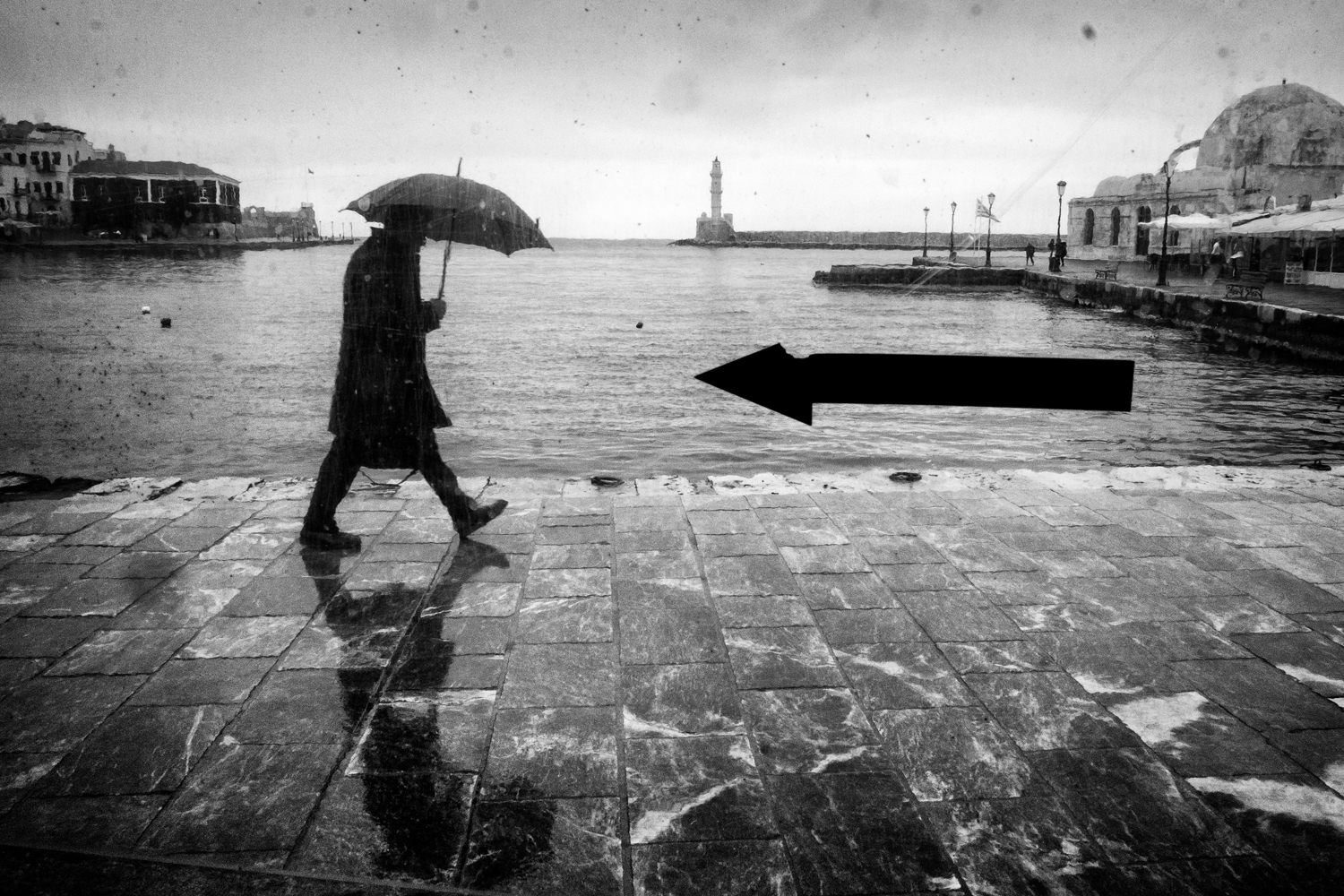
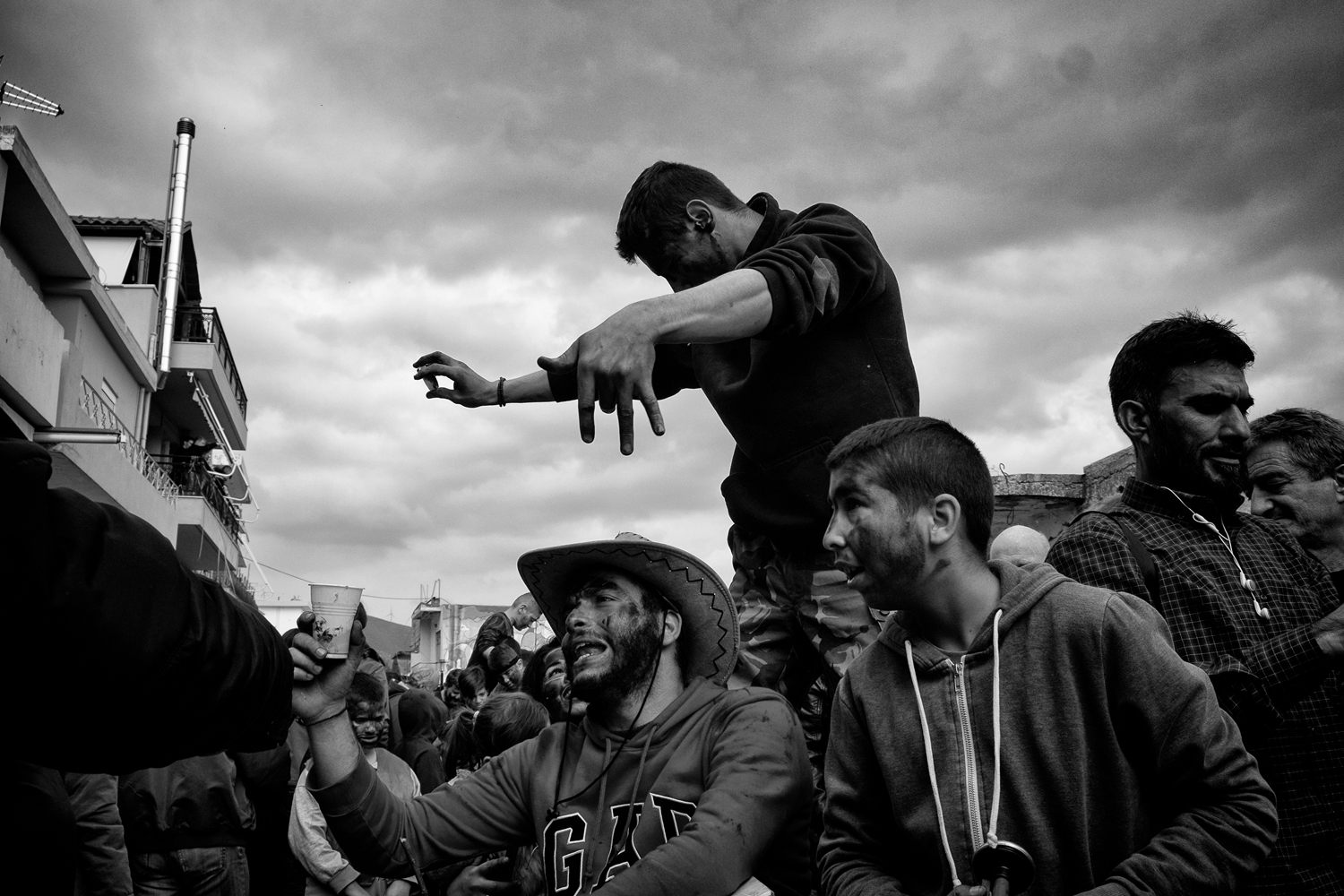
The people who held the machines called cameras thus looked to my eyes like shamans or magicians and alchemists. They mixed liquids and elements in the dark and out of wet white papers images appeared!
Photography was a profession for the selected few and photographs came out of a process that seemed to my eyes dangerous and magic. I felt awe and I still feel as I remember the first time I saw a picture appear.
My father had a camera and after he saw my excitement, he used to give it to me during our summer vacation to take some photos. But film was expensive and equipment also was expensive.
Then, everything changed. It was the time of the Polaroid.
With just a click the photo came out of the camera. It was as if the process of the dark room was automated and inserted inside the camera. I remember smiling and thinking that there must be a little shaman living inside those Polaroids mixing liquids, transforming white paper into images. I still remember the joy I felt as a child when I was taking photos with the Polaroid. I remember taking photos just for the joy of seeing the images appear.
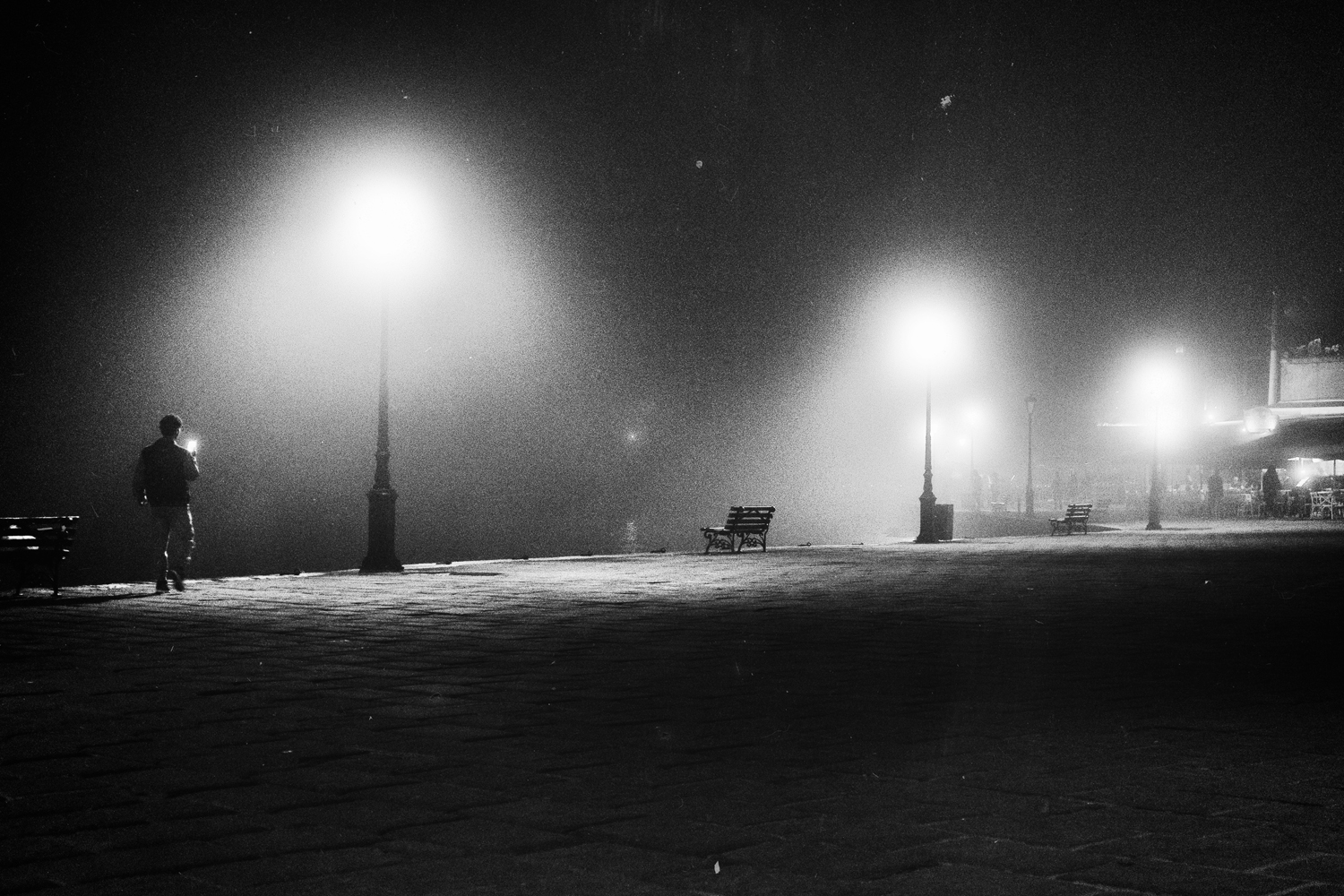
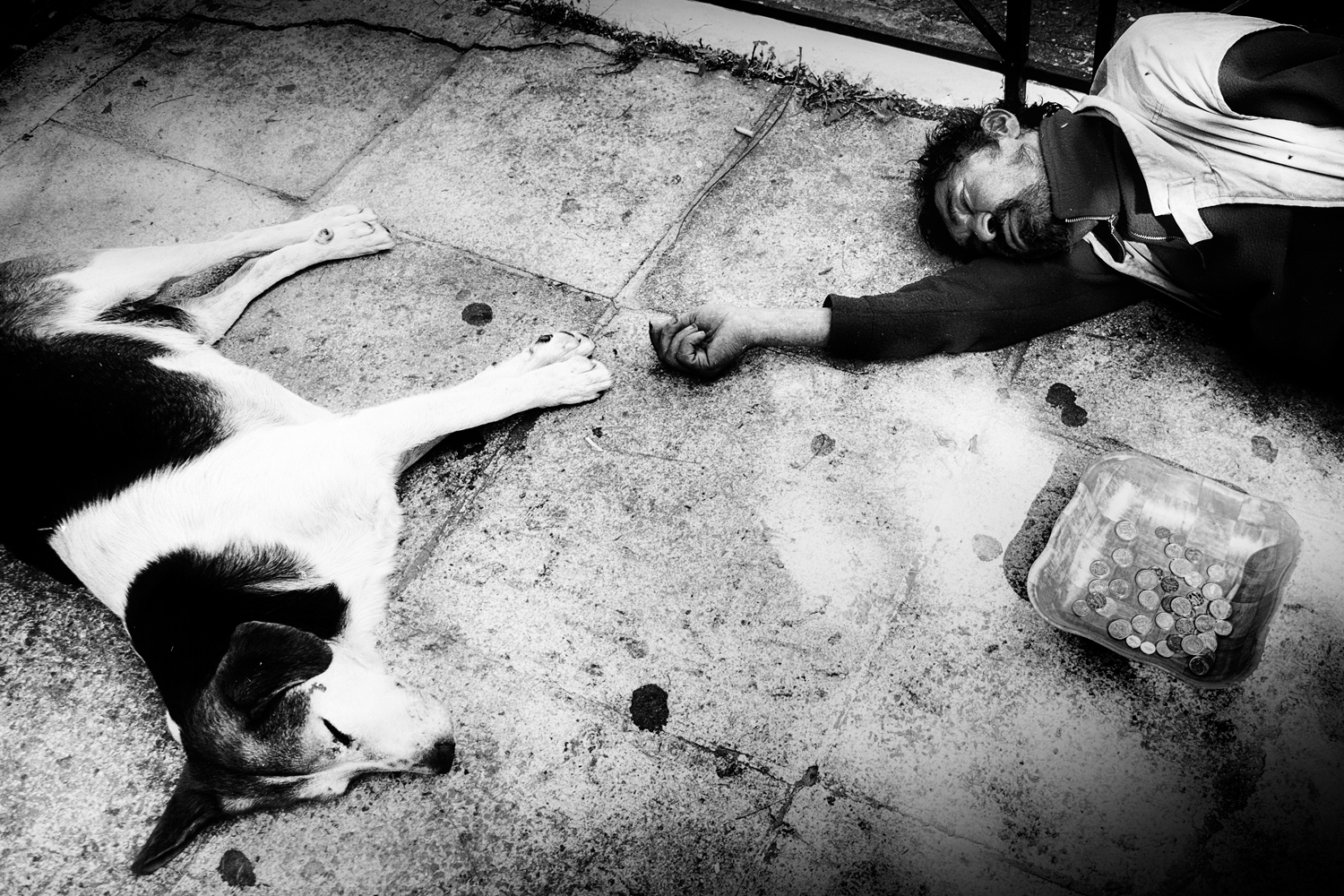
But then came puberty…
At that age I decided that photography was for people who had no worries on their lives or were too self-absorbed to really notice what was happening around them.
What I hated the most were family portraits. I used to try to find a corner to hide, I rarely smiled and when I smiled it just didn’t look good.
I despised that everyone wanted to “look good” and the fact that looking good meant something very specific that was almost identical in all family portraits: “wearing “good” clothes, smiling in a similar way, looking straight at the camera”. It all seemed fake and unreal, as if photography was a tool used to cheat reality, to simplify it up to its basics, to trick people thinking all is well when in reality all seemed so much more complex and confusing. It was pure propaganda to my eyes! It was a dictatorship that I was not permitted not to smile! If I did not smile, I was guilty for making reality visible!

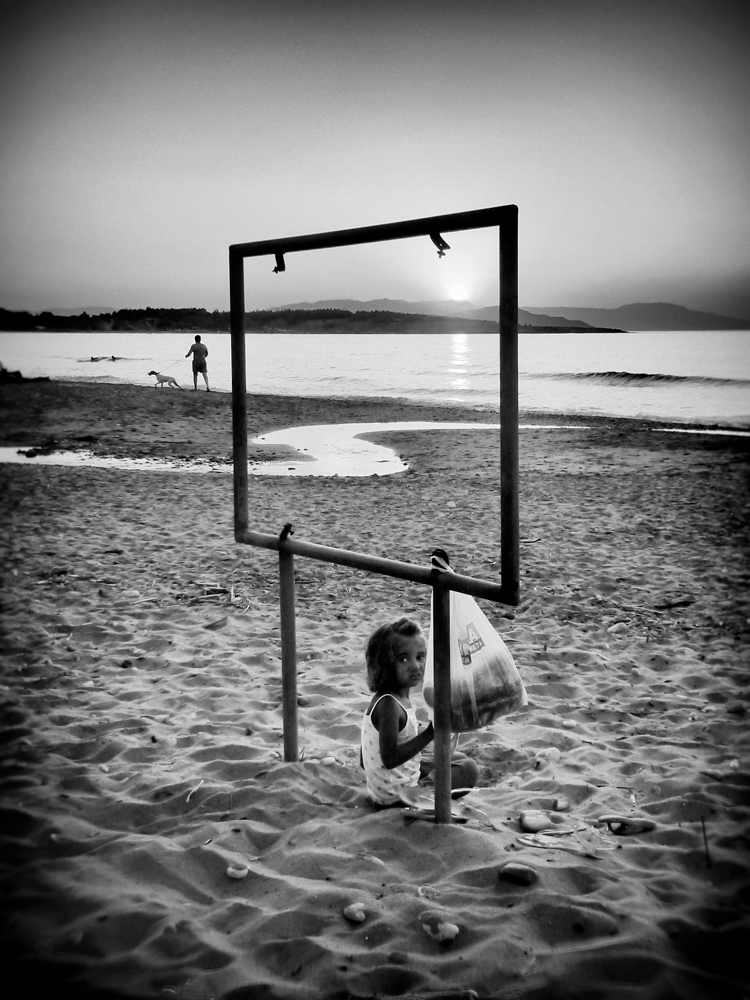
I associated photography with all this effort to “capture” fake moments. When I thought of photography I thought of tourists, people with white socks and fluffy hats, who took snapshots of everything, always smiling.
And then there were those who just because they could afford it they had expensive equipment, bought film and acted like they were artists. I despised them.
I despised their attitude, the fact that they acted like they were special or different from everyone else. I despised their clothes, the way they moved their hands, their discussions, the way they talked, the tone of their voice, the way they looked at people, the places they used to hang around. I despised the fact that they thought that photography made them different when in the end they acted just like all other people who tried to find a place to hide or a group of people that they could belong. The only difference was that they thought they were better. I despised their elitist nature.
Yes, I was a hater. But be certain, if you had a discussion with my past teenage self, he would be ready to counter any argument you might unfold to change his mind about photography and those who photograph. My past self was passionate and stubborn. As I am now passionate and stubborn about photography.
It all started changing when my older brother Nikos decided to buy a digital camera.

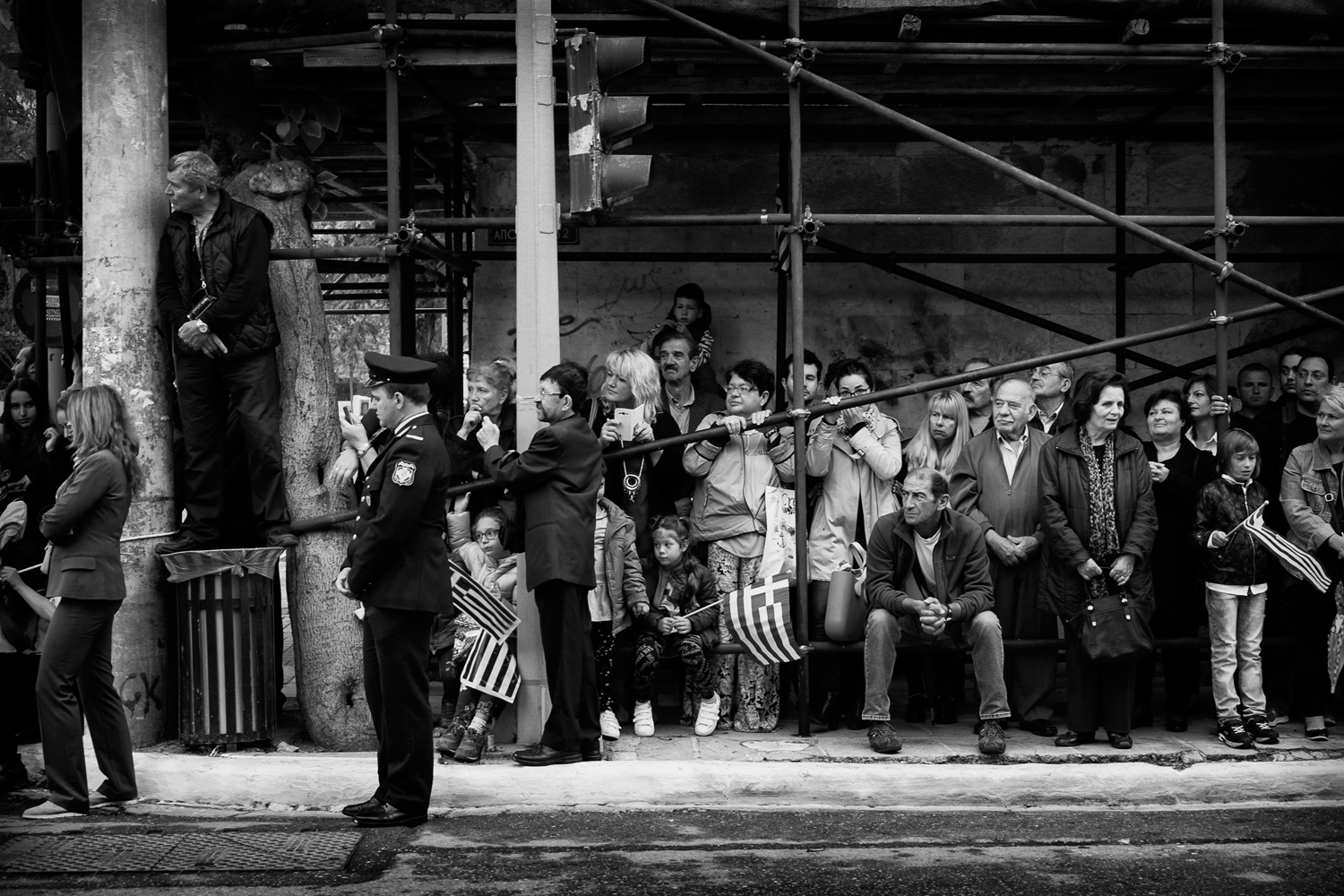
It was around 2006 and it must have been a Minolta but I can’t be too sure about the model. He took some photos of the sea on a stormy winter day and he uploaded them on a computer. I once again felt awe and yet I pretended that I wasn’t amazed. “It’s cool”, I said, trying to sound indifferent. But I was insincere.
Without doing almost anything, with just a click on a button, the images now appeared at the screen of the computer. My brother then went on processing some of the photos adding contrast, brightness and saturation. It was just amazing seeing how easy it had become to alter the atmosphere of a picture. What was magical once, had now become science. And it all seemed to be so easy!
My first digital camera was an Olympus E-400. I bought it at 2008 but I started using it after I finished my army training. From the first moments, I discovered that what I wanted to photograph the most was people.
In reality, by using a camera, what I discovered was something central about myself. I discovered that more than anything else, what was of most interest to me was people. And I wanted to capture people, their thoughts and emotions, their peculiar movements, the way they juxtaposed to create meaningful relations, to fill the emptiness of space or alter its form. I wanted to capture people as real as I could. I even tried some family portraits. Like the portrait of a family of refugees who fled from Syria and were now standing outside a police station at the city of Chania in Crete far away from their home. Not on vacation, but on exile. This was a family portrait that I wanted to capture because I thought it held a great symbolic value. But I am not going to talk about this right now.
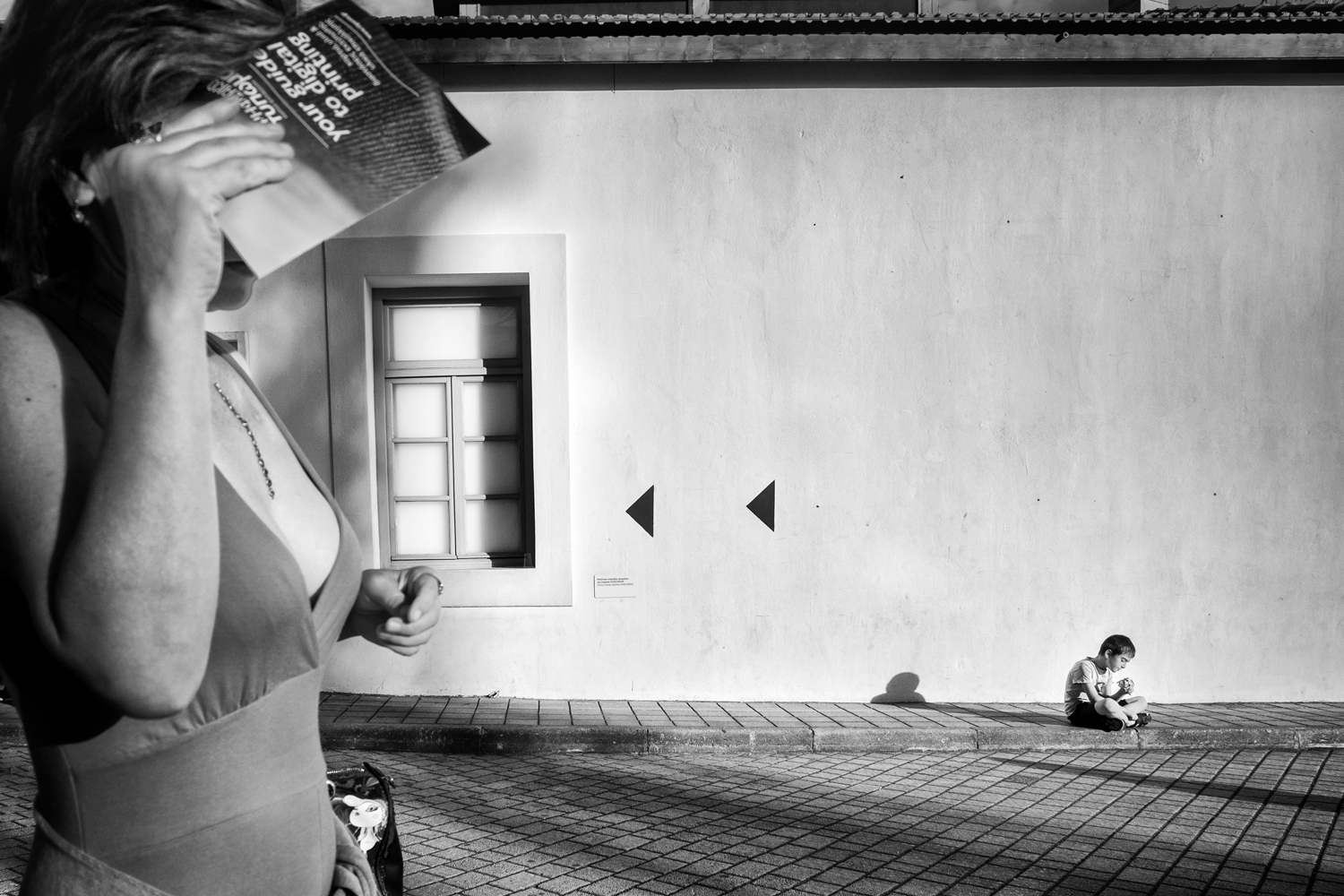

I also found joy on observing the movement. I could find a nice spot that I thought provided a great frame and I stayed there for 10, 20, 30 minutes, just standing and observing people as they passed, how their forms became connected with the background or with other bodies and what shapes they created, the play of shadow and light. It is like you are watching a strange theatrical play with no dialogue, where one or many stories were unfolding at once, and you have to find what connects each story, if they are at all connected.
Some years later, in 2015, I decided to go mirrorless. I think that this is a decision that many photographers have to make at a point. I decided to go mirrorless mainly because of the size and weight but also because I believed that this was the future. Smaller, lighter, better cameras.
In my style of photography less equipment, and smaller size is better. In news coverage, in documentary photography and in street photography, you don’t want to draw attention, you want to go as unnoticed as possible. Having a small sized camera might make you look less “professional”, less threatening, more common, but looking less professional is just what I was looking for. It was the most professional thing to do.
Smaller gives you time. And time is crucial when you are trying to capture reality as it happens. Small gives you time to see without being seen.
I thus chose fuji X-E1, which, in my opinion, is one of the most beautiful digital cameras ever to be sold. The price also is very affordable. But besides the price and the vintage look that bridges analog and digital, the main reason why I bought an X-E1 was because it is a true joy to use.
The X-E1 is a very small and light camera, where all buttons are placed in the right position for my fingertips. Also, the camera doesn’t feel fake. You can feel that you hold a quality machine, body and lens.
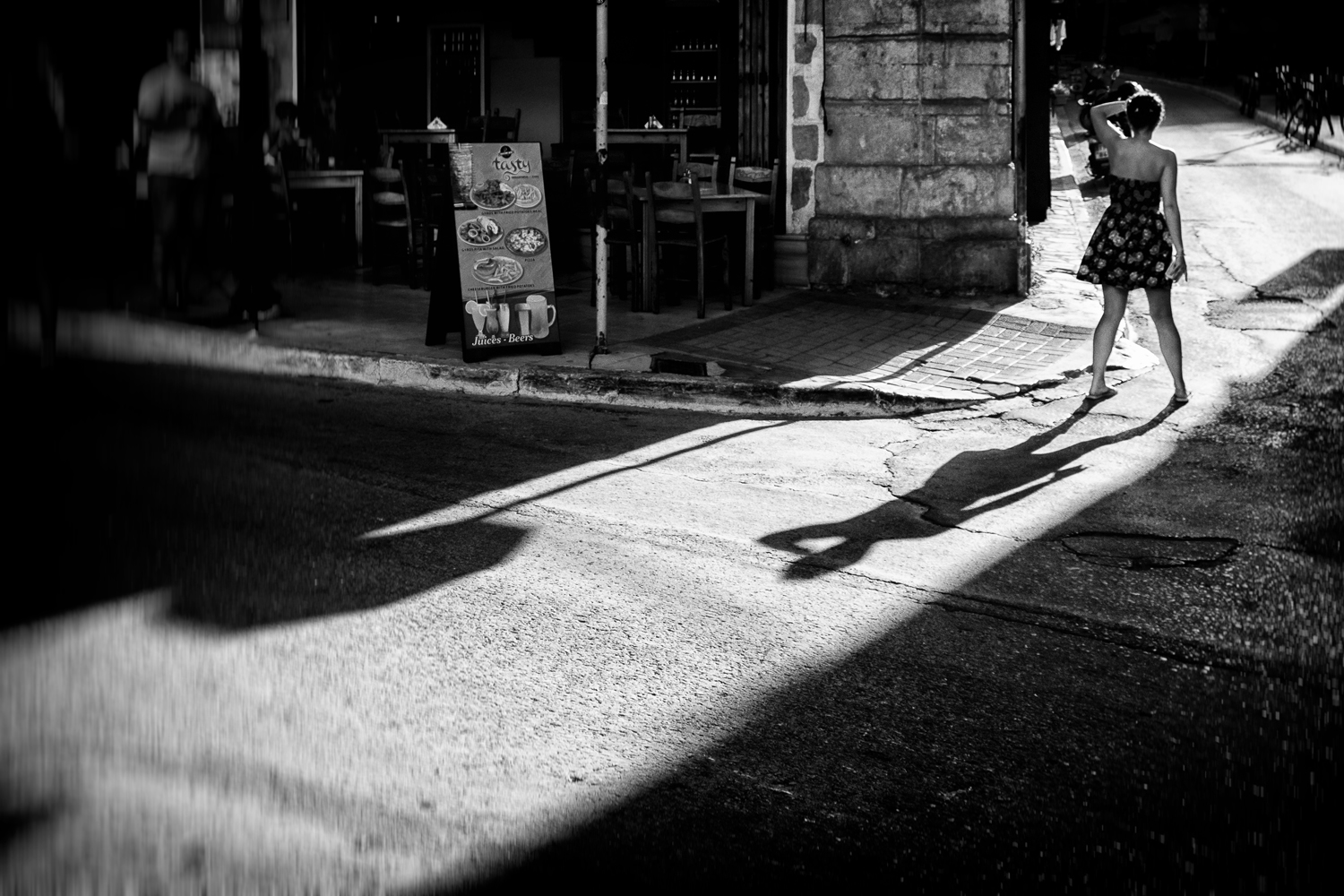
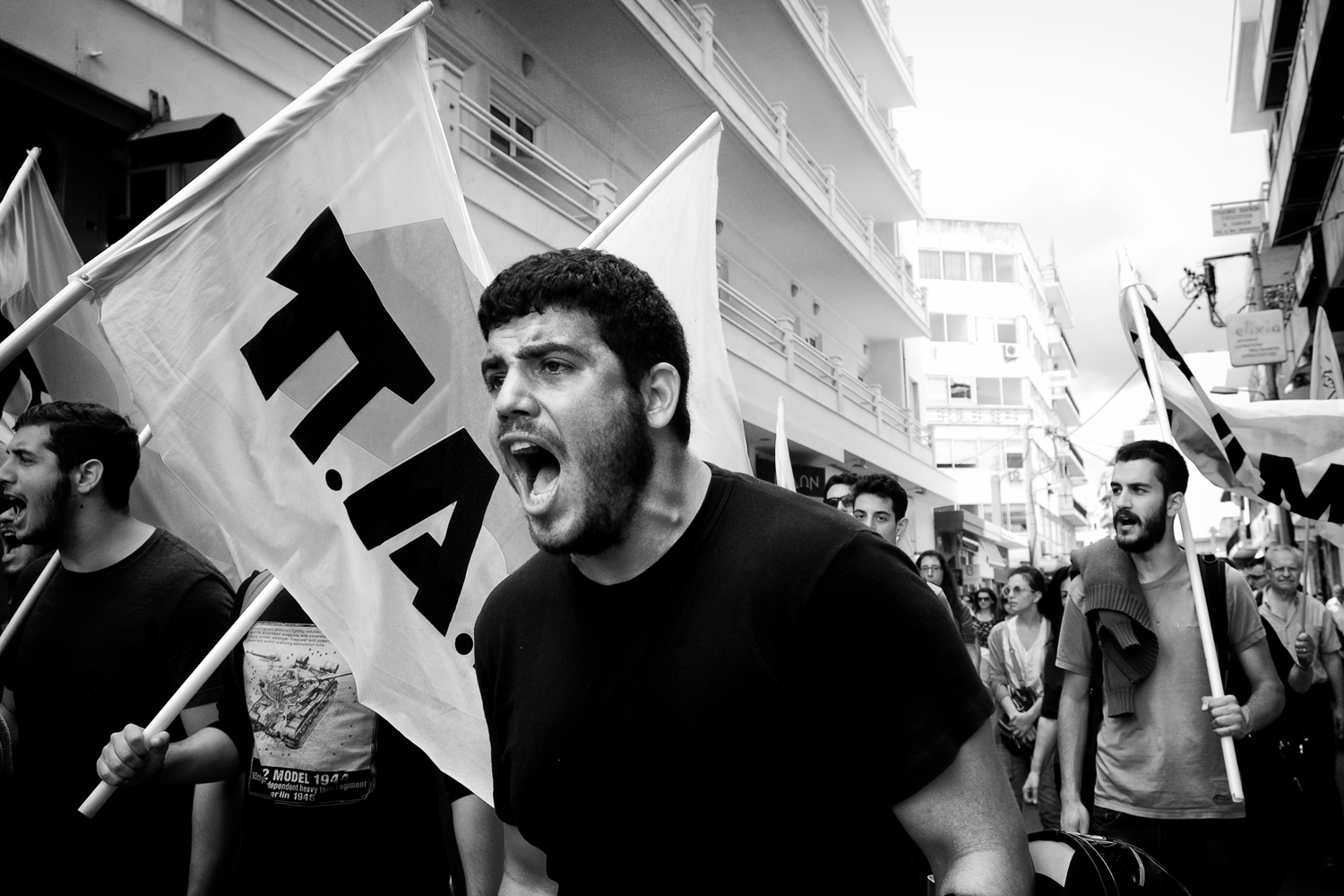
But most importantly, the image quality was ridiculously good, taking in consideration the amount of money it cost.
The APS-C sensor helped the camera shoot DSLR quality photographs while the kit 18-55 lens is unbelievably good. It is a very bright and crisp lens, which allows fast shutter speeds and low ISOs and it has a great balance of features and quality.
On the downside it has more shutter lag compared to DSLRs.
More recently, just a few months ago, I upgraded to a Fuji X-E3. The X-E3 is smaller and lighter than the X-E1. It is a truly marvelous camera, which improves in all categories and almost diminishes any issues I had with the XE-1, like shutter lag.
The Fuji X-E3 is as good as it gets when it comes to taking absolutely great quality photos while staying unnoticed.
So this is my story. And while it might not seem so, somehow it’s all connected.
I think that I might ended choosing Fuji because it looks like a film camera and it reminded me of the feeling of awe I had when as a child I saw those film photographers going inside this strange little dark room at the end of the long corridor.
I think that I still have the same principles about photography like when I was a teenager.
I still dislike the majority of family portraits. I can understand that there can be quality, even artistic portraits, family portraits, even selfies but this is not my main interest.
I prefer realism and spontaneous than pre-scheduled and organized. I still think that it is better not to draw any attention to yourself, thus keeping your equipment to a minimal. In the same sense, I think that keeping your appearance simple, not drawing attention to yourself is also crucial. However, sometimes, being dressed like those tourists with the big fluffy hats and the long white socks might be a good strategy for taking photos without anyone paying attention to you.
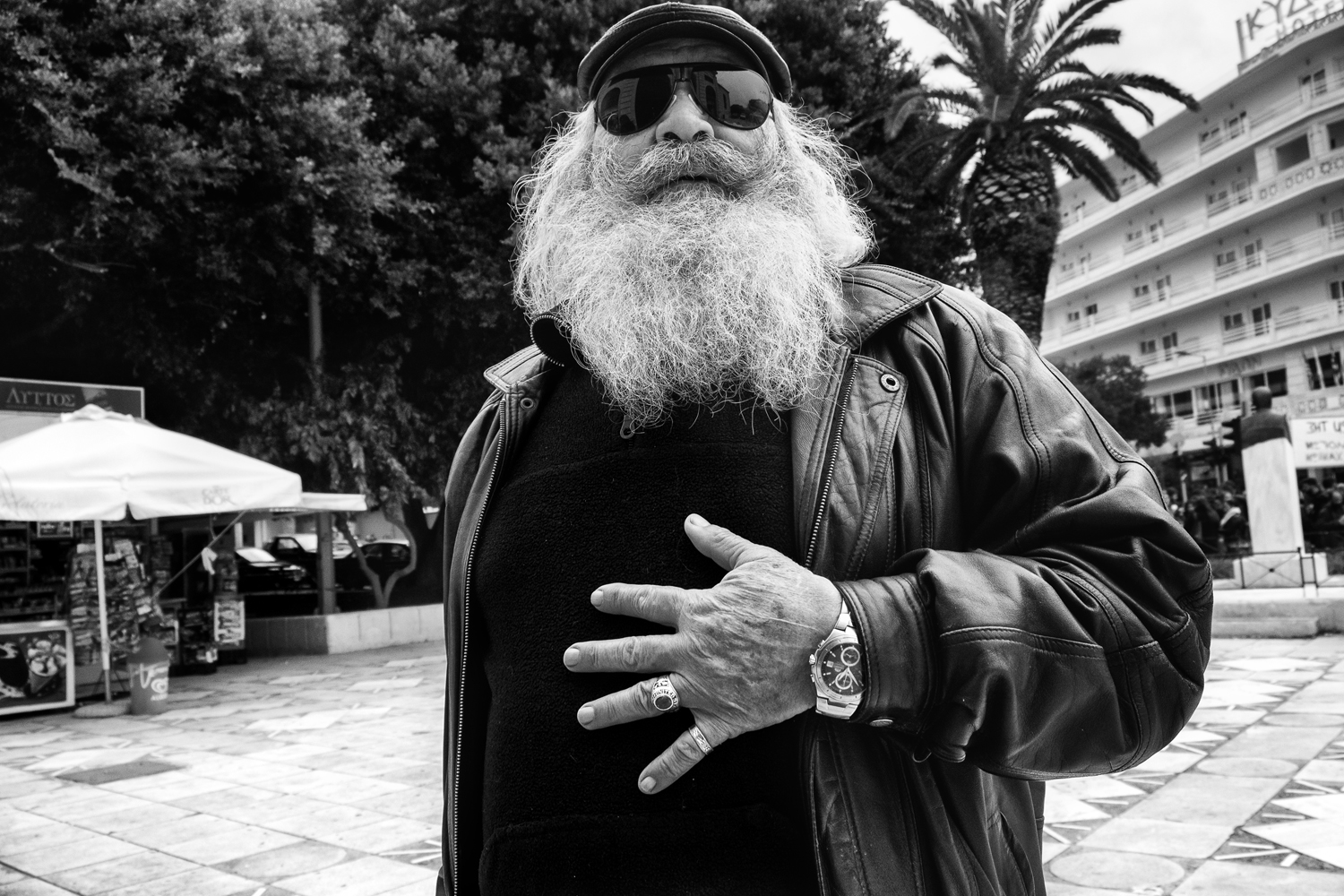
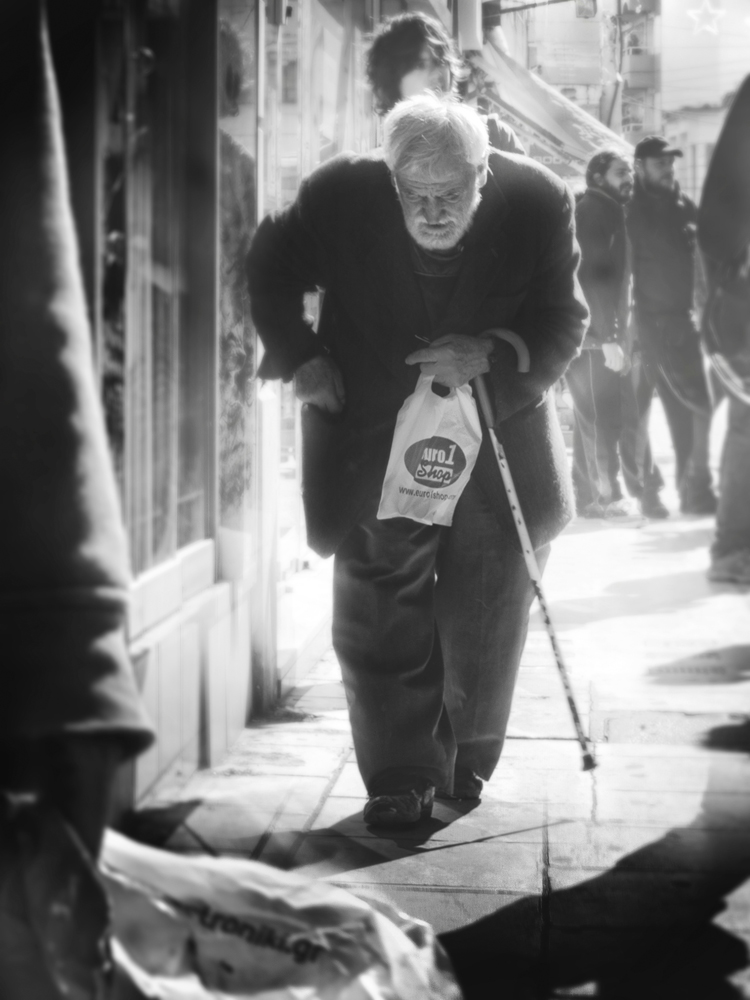
I still find that taking photos is not about the attitude, or the style, or the clothes you are wearing, or the places you hang around. I just think that simple and common is better for some kinds of photography. If you want to document everyday life on the streets, be like everyone else, not different.
I think that photography is art, but more and more it is art for the common everyday people.
It is an opportunity for expression and self discovery, but just an opportunity. It can be elitist but I think it is not meant to be. Photography is not mimicking, but it is not painting either. There might be patterns in photography that repeat themselves and techniques less or more complex, but more than anything photography is observing and documenting. It helps develop skills that can be useful in everyone’s life.
Photography is no more the privilege of the few selected, artists or professionals, but more and more an opportunity for all.
The technological revolution that takes place brings photography at the centre of our modern world and we have to choose either to turn the camera inwards to ourselves, or outwards, to the beauty that is the world we are living even when things turn ugly.
It is an opportunity to become better storytellers. And our stories can be more or less truthful. It is up to us.
Because in the end that is all that remains. Moments that tell stories.
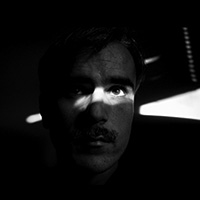
Giannis Angelakis
Photographs are fleeting moments that are kept for the purpose of telling stories. As a street photographer, I try to capture these moments as they happen. I did a degree of Cultural and Media Studies at the University of Wolverhampton (BSc) and studied at the Centre for Contemporary Cultural Studies and Sociology at the University of Birmingham (MPhil), a subject which I think is connected with my interest in human stories. Now, at the age of 39, I am trying to incorporate elements of street photography with a focus on the human subject on everyday news coverage.
I am an owner of FUJIFILM X-E3 which I am using up to the point of exhaustion. As in writing all my effort is put to develop my own personal style at telling a story with photography.




